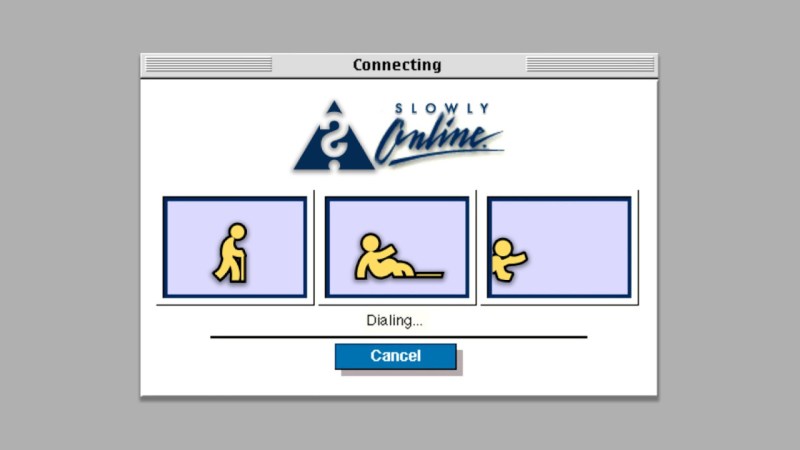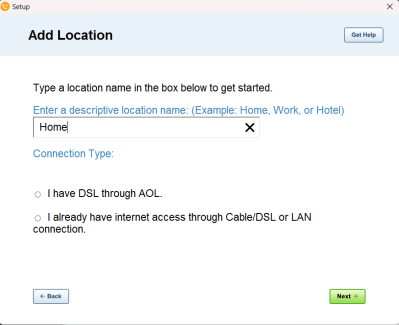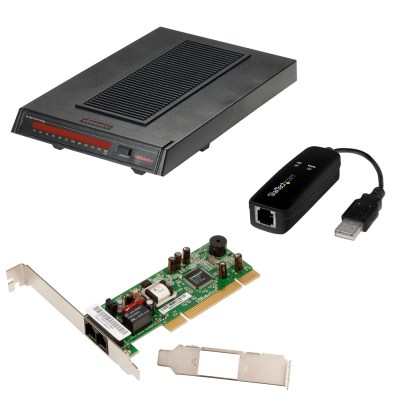

Dial-Up Is Still, Just Barely, A Thing
source link: https://hackaday.com/2024/03/06/dial-up-is-still-just-barely-a-thing/
Go to the source link to view the article. You can view the picture content, updated content and better typesetting reading experience. If the link is broken, please click the button below to view the snapshot at that time.

Dial-Up Is Still, Just Barely, A Thing

In an era dominated by broadband and wireless cellular networks, it might come as a surprise to many that dial-up internet services still exist in the United States. This persistence is not a mere relic of nostalgia — but a testament to the diverse and uneven nature of internet infrastructure across the country.
Yes, dial-up internet, with those screechy, crackly tones, remains a useful tool in areas where modern, high-speed internet services are either unaffordable or unavailable. Subscriber numbers are tiny, but some plough on and access the Internet by the old ways, not the new.
The Old Ways
The resilience of dial-up internet in the U.S. market is underpinned by several factors that ensure its continued relevance. Primarily, it caters to rural and remote areas where the infrastructure for high-speed internet has not been fully developed.

AOL weirdly still hosts a dialer program on its dial-up page, but it doesn’t actually have any dial-up functionality in it.
Despite significant advancements in telecommunications technology, there are still many regions in the U.S. where geographical challenges and the high cost of infrastructure development make it difficult for service providers to offer typical broadband or wireless services. In these areas, dial-up internet becomes the only feasible option for connecting to the digital world. For context, in 2019, census figures suggested just 0.2% of households used dial-up internet, a number surely even smaller today.
If you’re trying to get on the internet via telephone line today, though, you’ll find your options are pretty limited. Some big players like EarthLink and AOL stuck with dial-up for longer than most, but the companies no longer offer sign-ups on their websites. Not surprising, given the take rate must have been near zero.

You can apparently get free dialup internet access from NetZero, though you will still be paying for phone calls made when you dial in.
Instead, you’ll need to look at a company like NetZero, which offers a dial-up service for $29.95 a month. For that money, you get unlimited internet access with no time limit, which is probably easy to offer when customer numbers are so low. The company also touts its service as “HiSpeed Accelerated Dial-Up,” but it’s just some basic compression or caching system that doesn’t actually net you any data rate increase over the usual 56 Kbps speed of traditional dialup connections. It also offers an ad-supported “Free ISP” service offering up to 10 hours of usage per month, including webmail.
Juno is another ISP operating in the dial-up space, similarly offering “accelerated” service with unlimited hours for $29.95 a month. Hilariously, DSLExtreme offers unlimited dial-up too, despite its name. On an annual contract, it’s as cheap as $9.95 a month, or $12.95 a month if you’re paying as you go.
It’s easy to imagine that for some, the cost factor could play a significant role, but it’s not really the case. Regular broadband connections can be had fairly cheaply, as can cellular service with Internet access bundled in. Ultimately, dial-up isn’t really a cheaper way to get online at all, especially when you consider you have to pay for regular telephone service as well. It really only makes sense if you’re far away from any wireless or wired broadband infrastructure and it’s the only way you can get online. In this way, it can prove a useful way for those in remote areas to do simple tasks like access email or process credit-card payments.
You won’t do much beyond that, though, because dial-up tech is firmly stuck in the 1990s as far as speeds are concerned. At best, you’ll get something approaching 56 Kbits/sec if you’ve got a nice V.92 modem and a great connection. In reality, if you’re calling your ISP from a great distance from a rural area, you might find that your speeds are somewhat lower if the connection isn’t crystal clear.
Classics Never Go Out of Style
At least getting yourself a modem is still fairly easy. US Robotics still maintains a small range of 56K modems, and states that most of them are compatible even with Windows 11.

If you want a high-quality modem these days, you might find buying a refurbished US Robotics unit to be your best bet. They were built to last and look like they’re still living in 1989.
The 5670 is a PCI soft modem if you like your operating system to do the heavy lifting, with an MSRP of just $14.99. You can also source a high-quality refurbished USR3453C if you have a demanding business-grade application.
Other options include the 5686G external modem with an RS232 interface, or the 5639 soft-modem if you simply have to have a USB interface. StarTech does actually sell a hardware USB modem, however, if you’re looking for modern connectivity and a more reliable experience. Ultimately, though, much of what you’ll find for sale online is cheap new USB soft-modems, whereas most hardware modems for sale are used units from the early 2000s and before.
For most of us, it’s hard to imagine using dial-up internet in this era for anything other than pure historical interest. It’s too slow to reasonably load most regular websites, which have all been designed for the higher speeds of modern broadband connections. However, if you’re doing something that needs connectivity on the end of some dusty old rural phone line, you might find yourself getting familiar with the screechy kind of Internet once more.
</div
Recommend
About Joyk
Aggregate valuable and interesting links.
Joyk means Joy of geeK